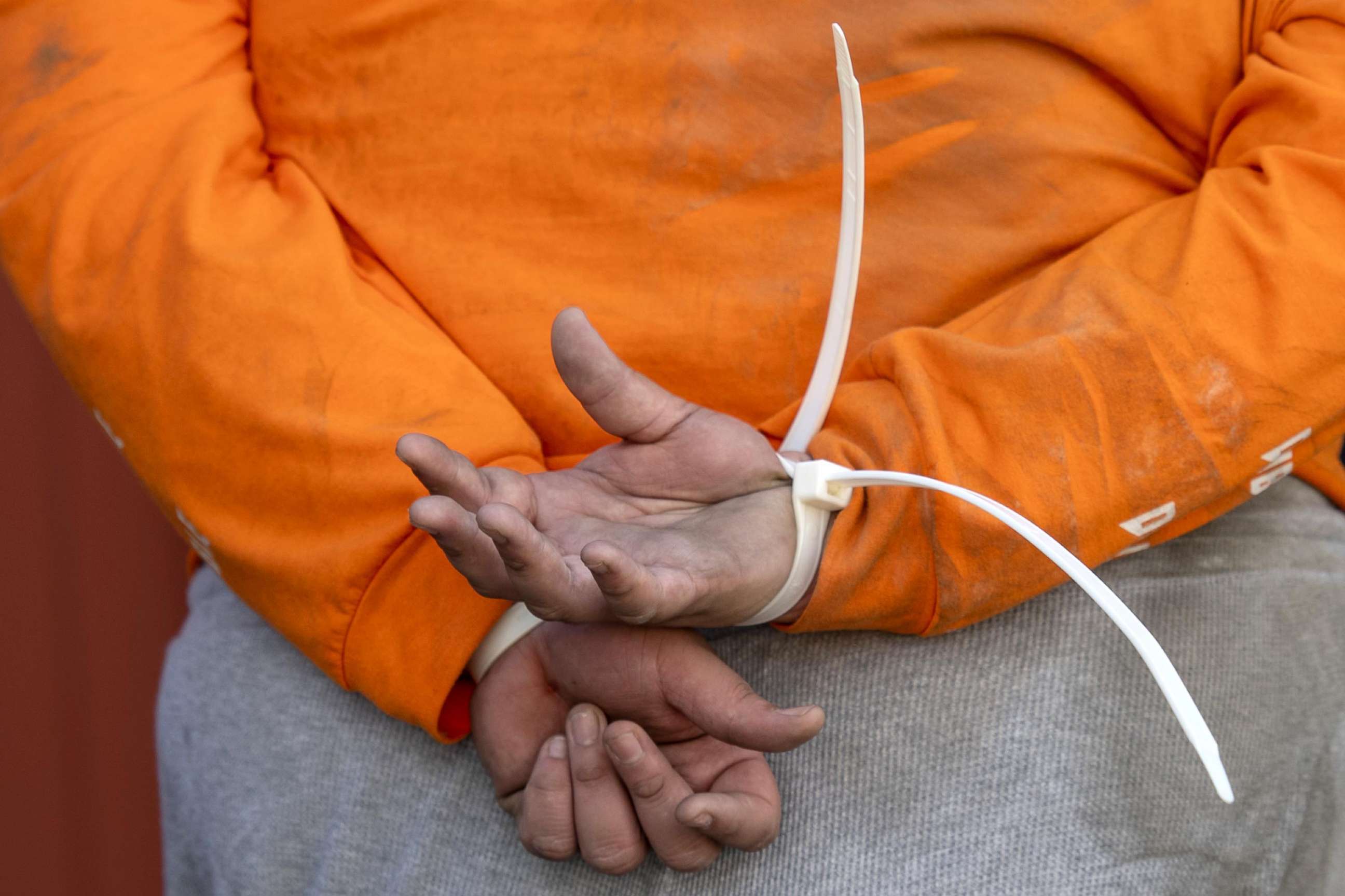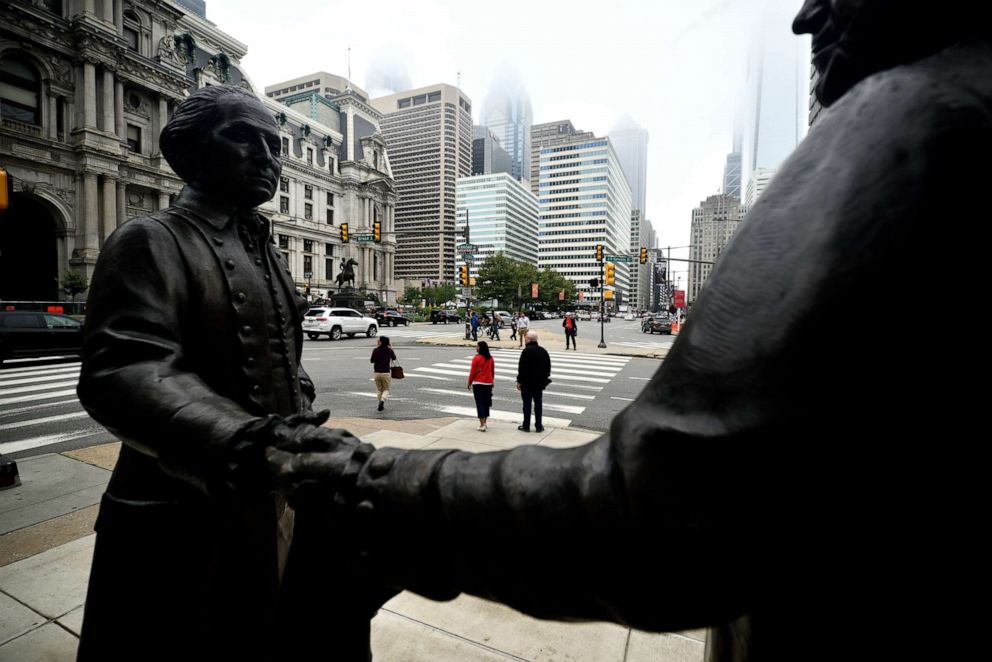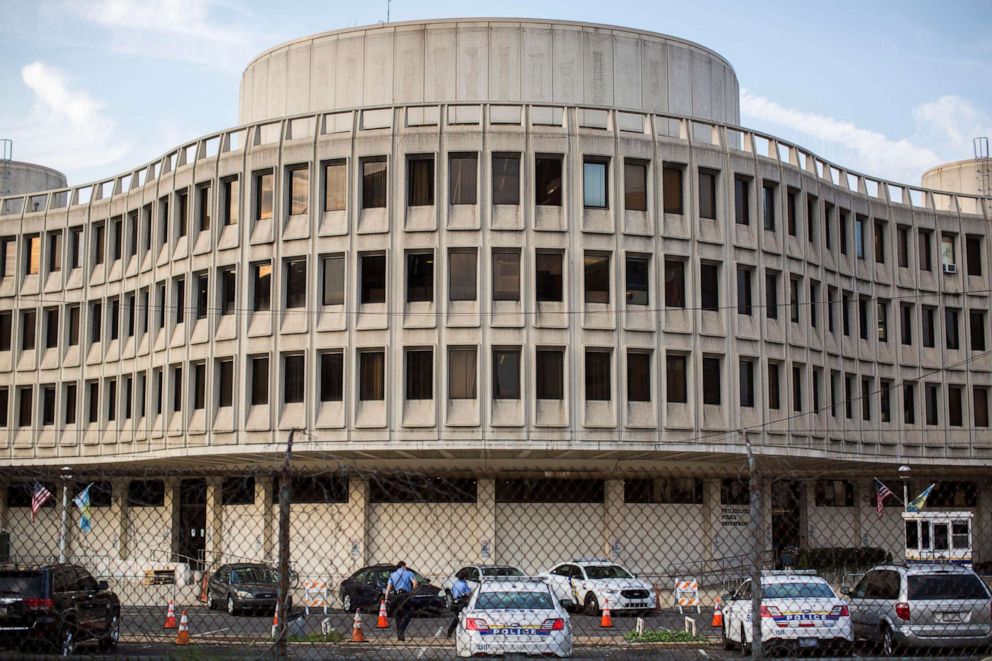As loitering and curfew arrests decline nationwide, Philadelphia's use of the tactic stands out
Data shows the vast majority of those arrested were young black people.
The vast majority of police departments in the United States have not reported any arrests for loitering or curfew violations in recent years, a sign that the controversial police tactic is falling out of favor. But an ABC News analysis of recent arrest data shows that, even as use of the tactic declines dramatically nationwide, some departments continue to use it aggressively.
One of its most prolific proponents? The Philadelphia Police Department.
According to data voluntarily reported to the Federal Bureau of Investigation (FBI) by thousands of city and county police departments around the country, the Philadelphia Police Department reported arresting more young people for loitering and curfew violations than any other city in the United States from 2016 to 2018.
Even as their overall number of loitering and curfew arrests declined each year, Philadelphia police still arrested 15,552 people — all of them juveniles — for those offenses over that three-year period, 10 times more than Nashville, which reported arresting the second most people. In 2018, Philadelphia accounted for nearly 1 in 4 loitering arrests nationwide.
The analysis of those arrests, conducted by ABC News in collaboration with ABC-owned stations, reveals a stark racial disparity. About 42% of Philadelphia’s population is black; about 63% of people arrested for all crimes throughout the city were black; but about 85% of arrests for loitering and curfew violations were made against young black people.
Riya Saha Shah, an attorney for the Philadelphia-based Juvenile Law Center, said those numbers are “striking for sure, but not surprising.”
“There’s a long history of treating young black people differently than young white people in terms of how criminal laws are applied,” Shah told ABC News. “It all goes back to how they are being policed. When you couple discretionary charges with over-policing, you see a racial disparity.”

In response to questions from ABC News, the Philadelphia Police Department issued a brief statement.
“In order to adequately comment on your findings, we would also have [to] perform a data analysis,” Philadelphia Police Commissioner Danielle Outlaw said. “That stated, we remain deeply concerned about the racial disparities that exist at all decision points in the criminal and juvenile justice systems. As announced Tuesday, we are joining the City in enacting numerous police reform measures that will serve to address disparities such as these, and bring about the meaningful change we all desire.”
Loitering statutes vary widely, but in Philadelphia, the city’s statute defines loitering as “idling or lounging in or about any place or facility … so as to prevent others from passage, ingress or egress, or to idle or lounge in or about any place or facility.”
Similarly, according to the Philadelphia Police Department’s Enforcement of Curfew Ordinance, updated most recently in 2014, “no minor shall remain in or upon any public place or any establishment from the Evening Curfew Time,” which varies by season, day of the week and the minor’s age, unless accompanied by a parent or doing some other “legitimate” business.
Police departments once viewed loitering arrests as an effective tool for disrupting certain types of criminal activity, such as drug dealing and prostitution, but departments across the country appear to have decreased their reliance on the tactic as concern has grown that leads to racial profiling.
Legal experts broadly agree that it is a highly discretionary charge, and in past legal challenges to its constitutionality, jurists have questioned whether loitering statues are vague, overly broad and highly vulnerable to discriminatory enforcement.
In 1972, the U.S. Supreme Court ruled that one city’s loitering statute “encourages arbitrary and erratic arrests and convictions, it makes criminal activities that, by modern standards, are normally innocent, and it places almost unfettered discretion in the hands of the police.”
According to Andrew Leipold, a professor of criminal law and procedure at the University of Illinois College of Law, loitering laws disproportionately affect minority communities.
“Loitering statues have historically targeted the poor and have historically targeted minorities,” Leipold told ABC News. “The overlap makes it difficult to untangle, but minorities are nevertheless disproportionately affected.”

The analysis covers a three-year period ending in 2018, from which the most recent data is available. It does not include data from police departments in Florida or Illinois — or the New York Police Department, the country’s largest police force — which do not report demographic data on arrests to the FBI. It is also limited to jurisdictions that made at least 100 loitering and curfew arrests during that time period.
The analysis shows that loitering and curfew arrests are rapidly becoming a thing of the past. Less than 10% of departments arrested anyone for loitering and curfew violations in 2016 to 2018. Only about 100 of more than 10,000 police departments around the country arrested at least 100 people over that three-year period.
Where loitering and curfew arrests are still being made, however, the data shows a significant disparity, after accounting for the demographics of the cities and counties those police departments serve. In nearly 90% of police departments that arrested at least 100 people for loitering and curfew violations from 2016 to 2018, young black people were more likely than young white people to be arrested.
And in 32 of the 101 departments included in the analysis, the disparity was much worse — young black people were five times more likely to be arrested for loitering and curfew violations than young white people.
Likewise, in Philadelphia, arrests for loitering and curfew violations are in decline, down from about 6,000 in 2016 to about 4,300 in 2017 to about 4,000 in 2018. But as overall arrests have declined, the percentage of young black people among those arrests is actually rising — 76% in 2016, 79% the following year and 85% in 2018.
That same trend is reflected in other large cities and nationwide. In Minneapolis, for example, where George Floyd’s death at the hands of a white police officer sparked the latest reckoning over racial bias in policing and police brutality, arrests for loitering and curfew violations are in decline, having dropped from 378 arrests in 2016, to 203 in 2017, to only 61 in 2018. But the percentage of young black people among those arrests has risen from 73% to 79% to 86% in that same time period.
Across the United States, meanwhile, the percentage of young black people arrested for loitering and curfew violations around the country is now double what it was two decades ago, reaching 40% in 2013 and remaining above that benchmark ever since.

In response to questions from ABC-owned local station WPVI-TV on Thursday, Philadelphia’s district attorney Larry Krasner expressed alarm at the findings of the ABC News analysis.
“Assuming that that is correct, that’s troubling,” Krasner said. “It certainly suggests the possibility the use of a certain type of violation for what is more social control than is law enforcement.”
Even as the numbers continue to decline, experts noted that loitering and curfew arrests can still pose serious consequences for mostly young black people.
Shah, from the Juvenile Law Center, cited the “never-ending loop” of the juvenile justice system, in which a young person can find themselves trapped in a cycle of incarceration, probation violations and unpaid fines and fees that leads to back to incarceration.
“Somebody who is brought in on a minor charge like loitering,” Shah told ABC News, “could end up being incarcerated for a relatively long period of time.”
Chad Pradelli, an investigative reporter for ABC-owned station WPVI-TV in Philadelphia, contributed to this report.




